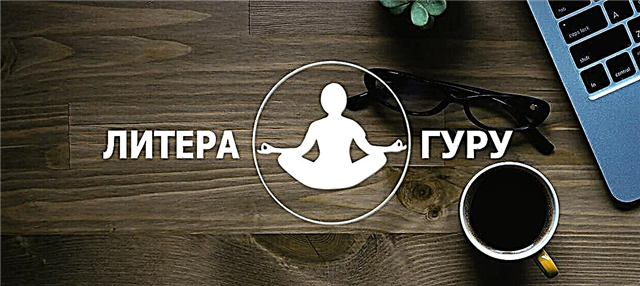Managers often devote their time not to team problems, but to other issues - finance, marketing, sales, operations. There are two reasons for this: teamwork is difficult to measure (and how then to evaluate it?), And teamwork is difficult to achieve.
However, teamwork is hard to overestimate. Getting rid of the intrigues and prejudices that become the scourge of most organizations, the team moves toward the goal. If we want to help people fulfill themselves in the profession, there is nothing more important than teamwork.
In its development, the team must overcome five problems:
Problem number 1: lack of trust. Members of good teams trust each other at a fundamental emotional level. They can allow themselves to be vulnerable, confessing to each other in mistakes, weaknesses, fears. They reach a level at which they can be completely frank with each other without looking back. This is important because ...
Problem number 2: fear of conflict. Trusted team members are not afraid of heated discussion of problems and decision-making necessary for the success of the organization. They are not afraid to disagree with each other, argue, ask questions - use everything in order to find the best answers, discover the truth and make the most correct decisions. This is important because ...
Issue 3: Lack of dedication. Team members who are able to openly object to each other can unanimously come to important decisions, even if initially there was no agreement between them. When all opinions and ideas are “laid out on the table” and discussed openly, team members are confident that all possible options will be considered. This is important because ...
Problem No. 4: Avoidance of Responsibility. Team members who are dedicated to their work do not hesitate to remind each other that they are responsible for the implementation of the tasks. Moreover, they do not believe that the team leader is responsible for everything, but turn to colleagues immediately. This is important because ...
Problem number 5: inattention to the results. Team members who trust their colleagues, come into conflict, come to a decision and answer each other, most likely will prefer the interests of the team to their own needs and aspirations and will be able to concentrate almost entirely on them. They are not tempted to put their departments, careers, status over common goals and will persistently achieve results on which the success of the team depends.
Two important questions: are you a team? Are you ready for heavy loads?
Confidence building. There are no qualities or characteristics that are more important than trust. People who are not afraid to admit the truth about themselves will not participate in office intrigues, realizing that they are wasting their time and energy in vain.
Exercise "personal stories." Use a description of the types of behavior. Remember that any new information, if it is not used and not discussed, begins to be quickly forgotten.
Overcoming conflicts. Teams in which there is no trust are also arguing. It's just that their disputes often turn out to be destructive, because they are intertwined with intrigue, pride and rivalry. If team members do not interfere with each other from time to time, if they never squeeze each other out of the zone of emotional calm during discussions, they are likely to make not the best decisions for the organization.When a team recovers from an incident or a destructive conflict, it increases confidence that it is able to survive this, and this, in turn, builds confidence.
Create a conflicting team member profile. When people define themselves and publicly describe their ideas about the conflict, it becomes easier for them to accept the team norms that will be established. The absence of conflict is becoming one of the main problems of the meetings: they are boring.
Development of dedication. Devotion to business is when a group of intelligent independent individuals is involved in making a decision even when they disagree with it automatically. In other words, it is the ability to overcome the lack of consensus. Many people don’t really need their opinions to be accepted (that is, they don’t want to “get what they want”). They just want their ideas to be heard, understood, considered and explained from the point of view of the final decisions.
Clarify your decisions at the end of any discussion. Communicate with subordinates following the discussion so that they are also up to date. Define the thematic goal of the team at any given time. Do not try to create a set of indicators before the context for them is defined.
Acceptance of responsibility. The best kind of responsibility - to colleagues - takes root only when the team leader is ready to call employees to account for behavior or work. Bad results are almost always caused by behavioral problems. It is incorrect to react only to the results. Team members must hold each other accountable for behavior, even if it is uncomfortable for them. Unfortunately, most leaders do not like the idea of asking someone to behave better.
The main problem of creating a team in which work is built on responsibility is to overcome the understandable reluctance of people to criticize each other. The “effective team” exercise includes two questions: what is the most important characteristic of human behavior that strengthens / weakens the team?
Attention to the results. Result-oriented teams set their own standards for success. They leave no room for subjective maneuvers. But this is not easy, because subjectivity is attractive.
When team players stop paying attention to the results table, they inevitably begin to be interested in other things. Do not let distractions distract you: your own ego, career, money, interests of your department.
The new team is able to achieve significant results in 2-3 months.
The team should contain 3-12 members.
Will someone get fired? Willingness to get rid of a team member reduces the likelihood that this will have to be done. If the leader is ready to fire someone for the common interests of the group, then most likely they will reconsider their behavior, and if there are no real threats, then why change.
Start with an onsite workshop.
Tools and exercises:
- Team score. Fifteen questions pertaining to five issues make it clear which issues are worth dealing with.
- Myers-Briggs typology.
- Conflict Model. Draw a diagram divided into four parts. Part names: rare serious conflicts, frequent serious conflicts, rare superficial conflicts, frequent superficial conflicts. Each member of the team writes down his surname, and passes the leaf to the one to the left. Each participant puts X in the place that, in his opinion, describes how the owner of the name is involved in conflicts. The sheets are returned to the owner of the company, and he analyzes the results.












